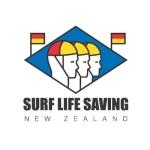Kiwis take "unnecessary risks" on the beach
Almost 100% of New Zealanders plan to visit a beach at least once this summer – however 47% predict they will swim at a beach not patrolled by Surf Lifeguards. These are the results of a DHL survey of 361 New Zealanders’ beach safety awareness as part of its on-going sponsorship of Surf Life Saving New Zealand (SLSNZ) since 2003.
“DHL Express is proud to support Surf Life Saving New Zealand and the wonderful job Surf Lifeguards do to make our beaches safer throughout summer. There is a significant number of avoidable accidents that occur each year on our coastline, and it is unsettling that so many Kiwis would take an unnecessary risk by swimming at an unpatrolled beach,” said Gary Edstein, senior vice president, DHL Express.
However some Kiwis plan to play it safer on the beach this summer - of the 53% who swim only at beaches patrolled by Surf Lifeguards, over 70% will swim between the red and yellow flags.
“More than 3,500 volunteer Surf Lifeguards patrol NZ beaches each summer. If you want to keep you and your family safe on the beach, the best way to do that is to ensure you swim between the flags,” says Grant Florence, chief executive, Surf Life Saving New Zealand
More than 80% of all those surveyed said they were confident a Surf Lifeguard could help them if they got into trouble on the beach. One of the greatest dangers on NZ beaches and coastlines are rips; strong currents of water that run out to sea. 55% of those surveyed said they knew how to identify a rip. More than 60% said if they were caught in a rip, they would float with the current and put their hand up for help
“If you swim at a beach patrolled by Lifeguards, putting your hand up is the best way to ensure you get help quickly. However – for the 47% of New Zealanders that swim at an unpatrolled beach, putting your hand up for help means you are relying on inexperienced and untrained members of the public to help and unnecessarily endangering other lives,” says Florence
“DHL’s survey results show the high number of beach-goers who frequent non patrolled beaches is consistent with our data. Managing risk at the more than 500 non patrolled beaches is led by an audit programme SLSNZ is conducting - with more than 100 of those beaches due to be audited this year.
“SLSNZ will use the audit results to work with councils to implement risk strategies, most commonly appropriate signage, but may often include provision of lifesaving equipment for emergencies or engaging the local community. We are also the international representative for Standards NZ to ensure consistent and effective water safety signage throughout New Zealand.” says Florence
Public education and survival swimming are also critical within SLSNZ’s strategy - if every New Zealander had a basic level of survival capability we would see New Zealand’s drowning toll continue to fall.
“Relying on drowning data only, is not an accurate predictor to forecast NZ’s future drowning rate which numbers have been based on in the past. SLSNZ believes data on the average 1,500 incidents each year - shows a more comprehensive picture of how and why NZ’s drowning rate is twice per capita than that of Australia.
“The ability to float and tread water will be a persons’ first saviour and is a realistic skill level that can be achieved.” says Florence
In 2008, SLSNZ patrolled 80 New Zealand beaches and saved more than 1300 lives. The number of beaches patrolled has increased nearly 15% in the last ten years as New Zealand’s coastline continues to be developed and increases as a popular recreational area.
